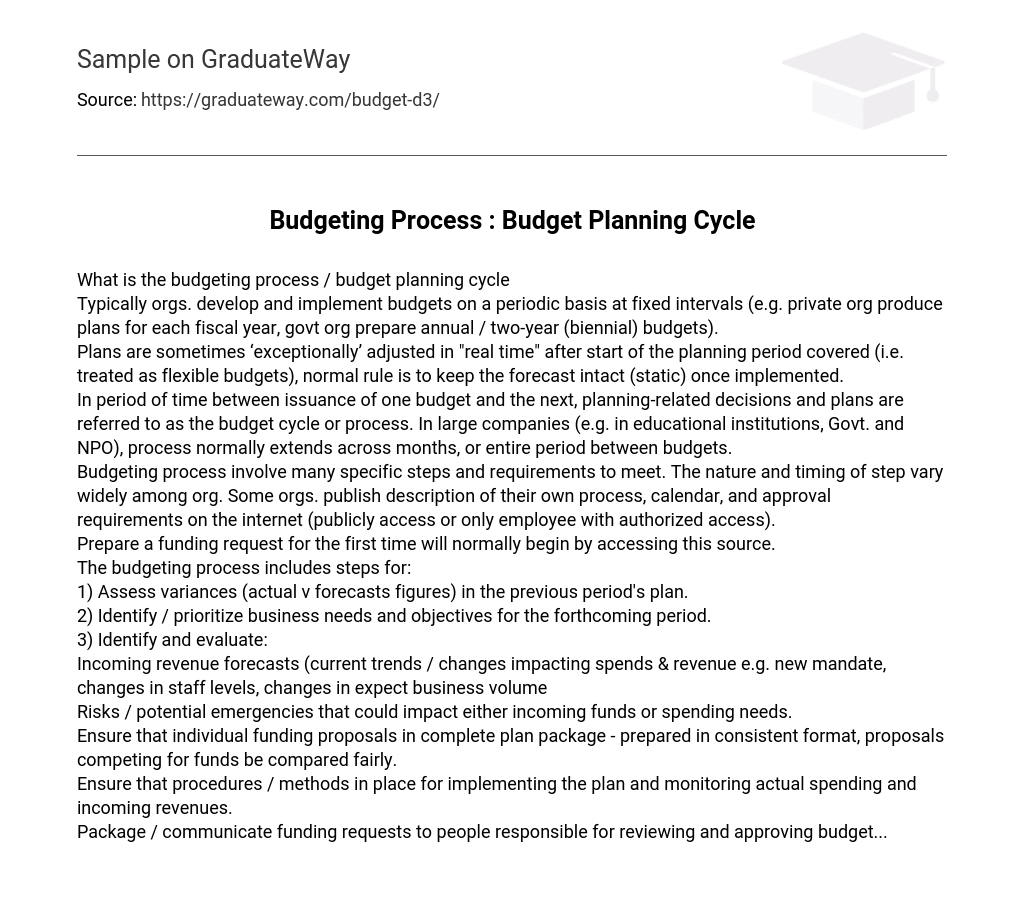What is the budgeting process / budget planning cycle Typically orgs.
develop and implement budgets on a periodic basis at fixed intervals (e.g. private org produce plans for each fiscal year, govt org prepare annual / two-year (biennial) budgets). Plans are sometimes ‘exceptionally’ adjusted in “real time” after start of the planning period covered (i.e. treated as flexible budgets), normal rule is to keep the forecast intact (static) once implemented. In period of time between issuance of one budget and the next, planning-related decisions and plans are referred to as the budget cycle or process. In large companies (e.g.
in educational institutions, Govt. and NPO), process normally extends across months, or entire period between budgets. Budgeting process involve many specific steps and requirements to meet. The nature and timing of step vary widely among org. Some orgs.
publish description of their own process, calendar, and approval requirements on the internet (publicly access or only employee with authorized access). Prepare a funding request for the first time will normally begin by accessing this source. The budgeting process includes steps for: 1) Assess variances (actual v forecasts figures) in the previous period’s plan. 2) Identify / prioritize business needs and objectives for the forthcoming period.
3) Identify and evaluate: Incoming revenue forecasts (current trends / changes impacting spends ; revenue e.g. new mandate, changes in staff levels, changes in expect business volume Risks / potential emergencies that could impact either incoming funds or spending needs. Ensure that individual funding proposals in complete plan package – prepared in consistent format, proposals competing for funds be compared fairly. Ensure that procedures / methods in place for implementing the plan and monitoring actual spending and incoming revenues. Package / communicate funding requests to people responsible for reviewing and approving budget…





